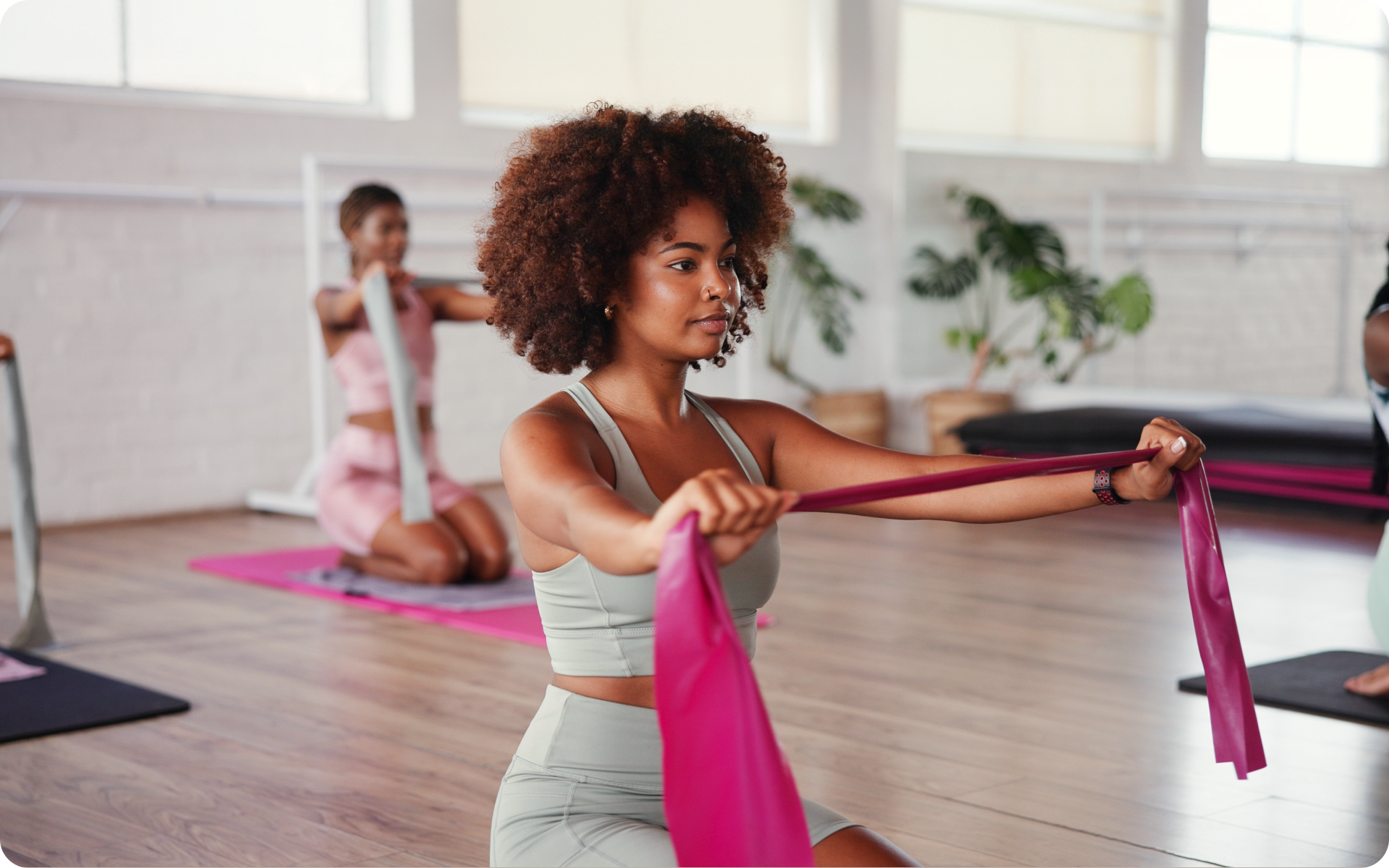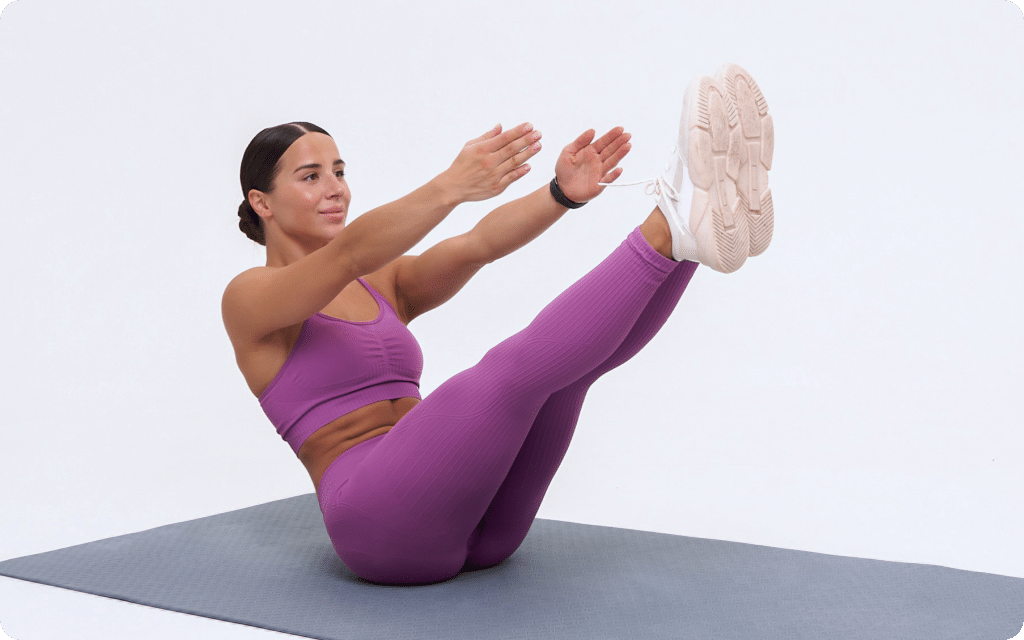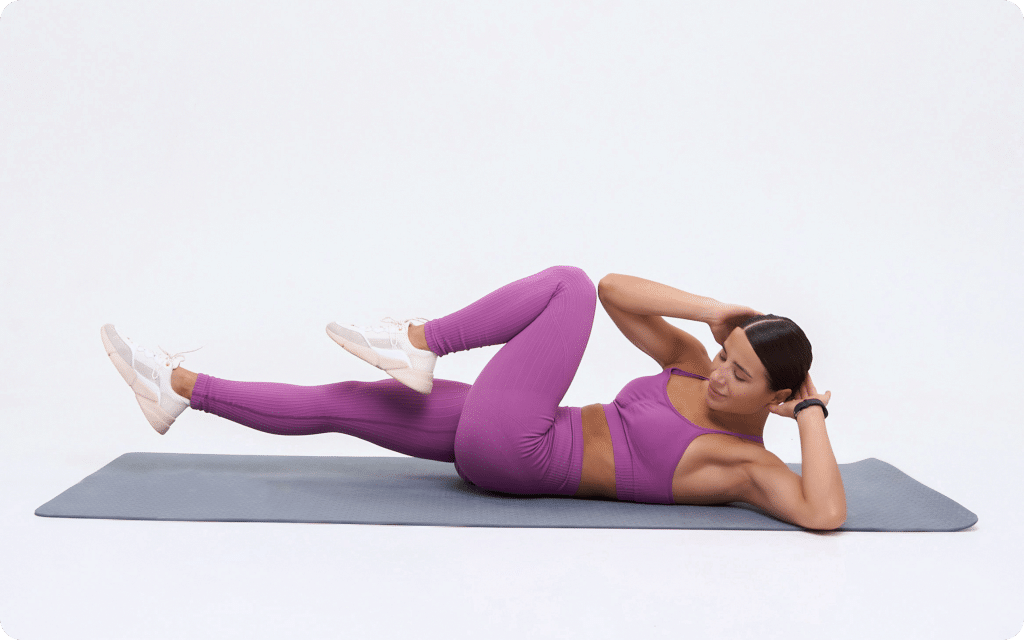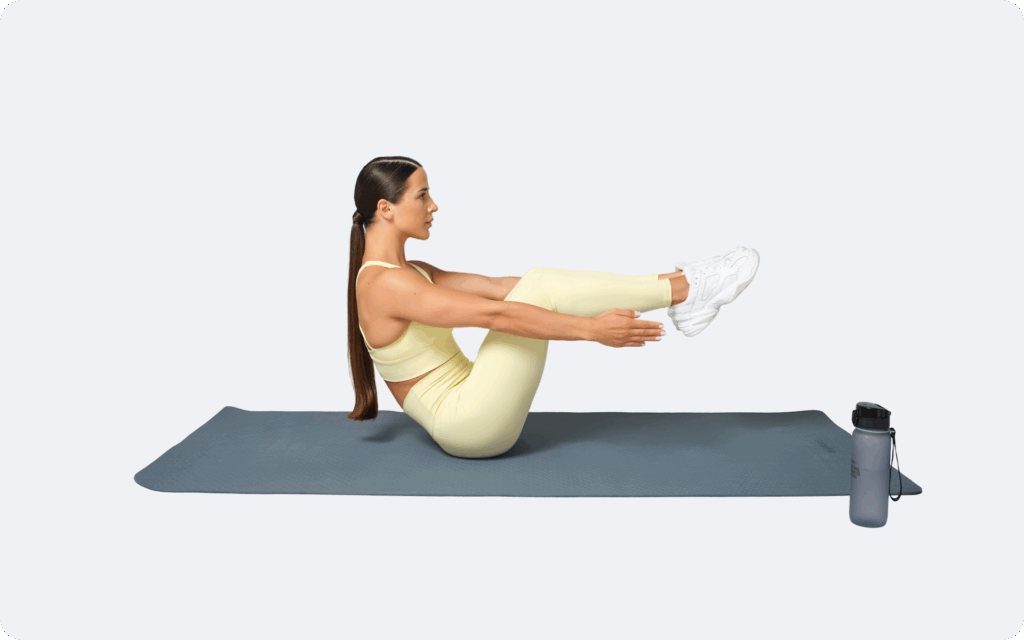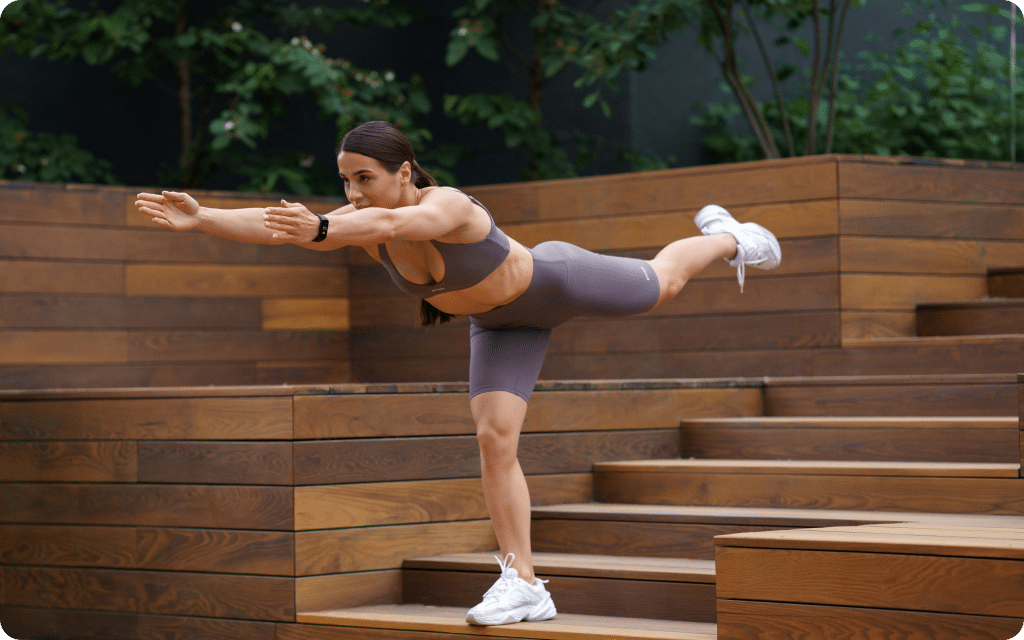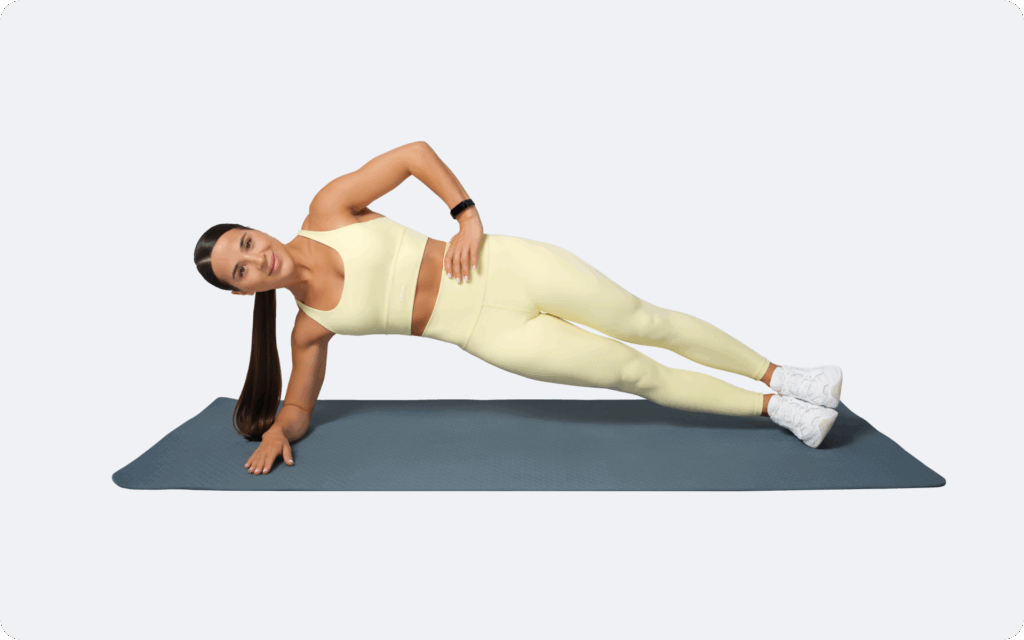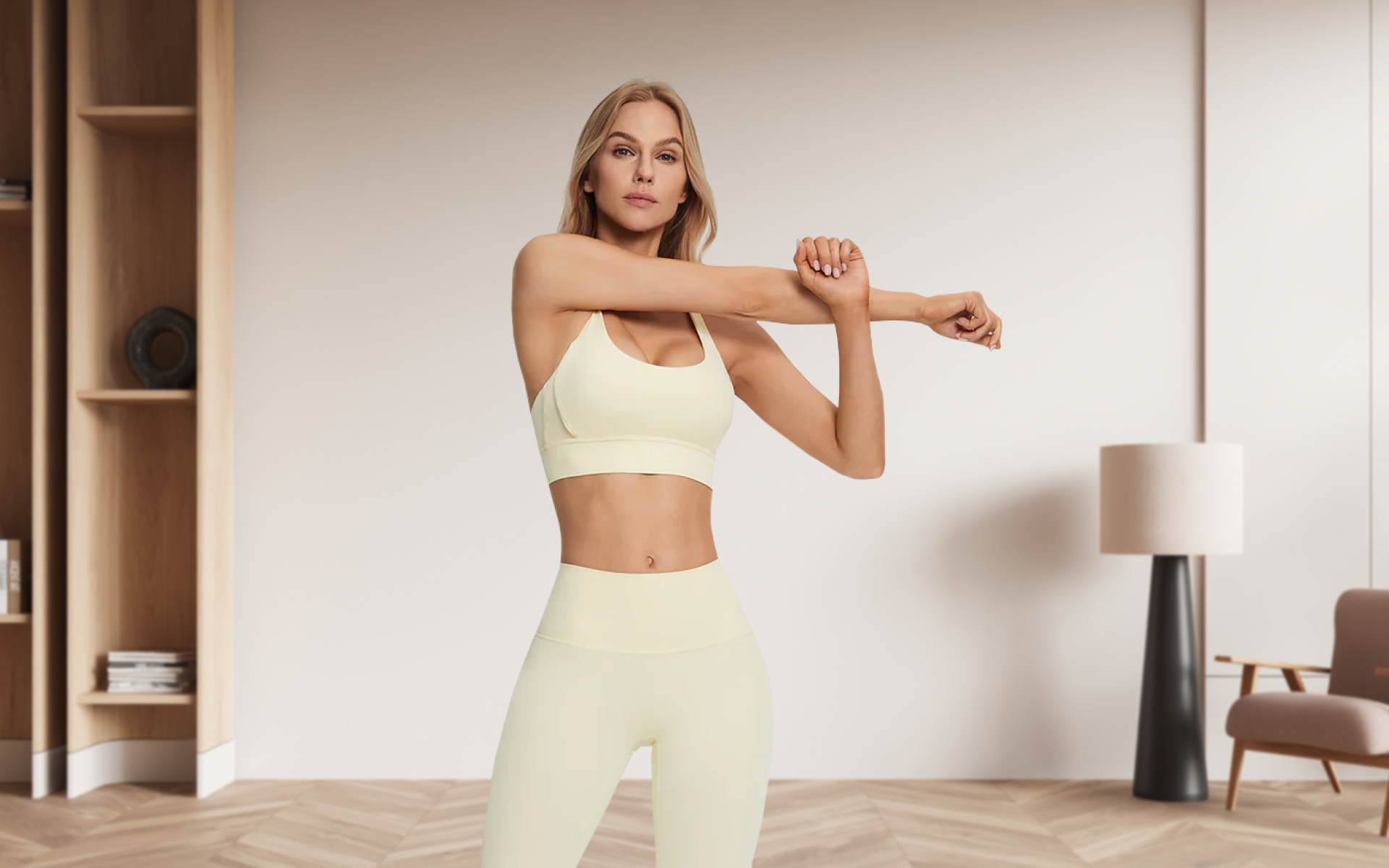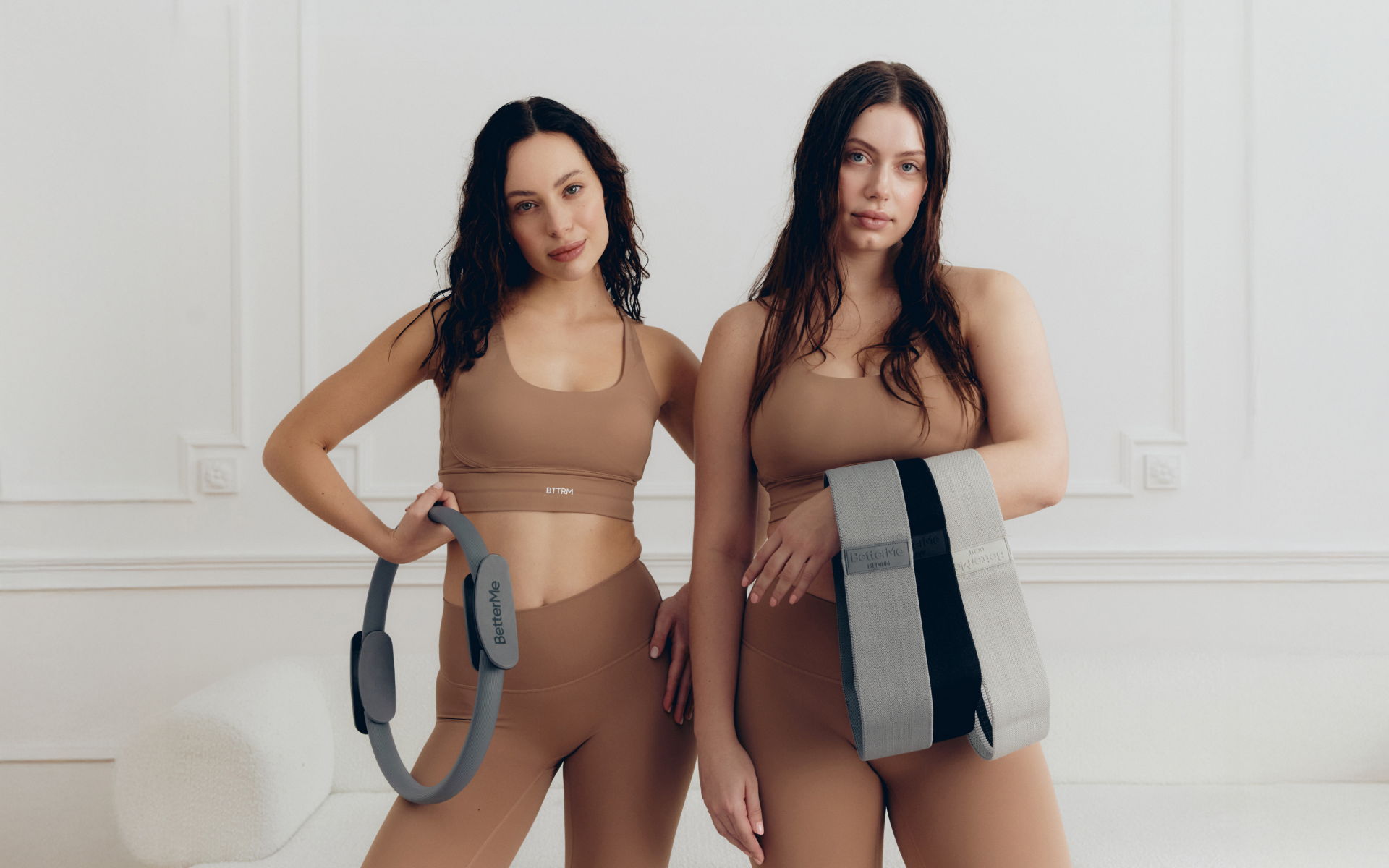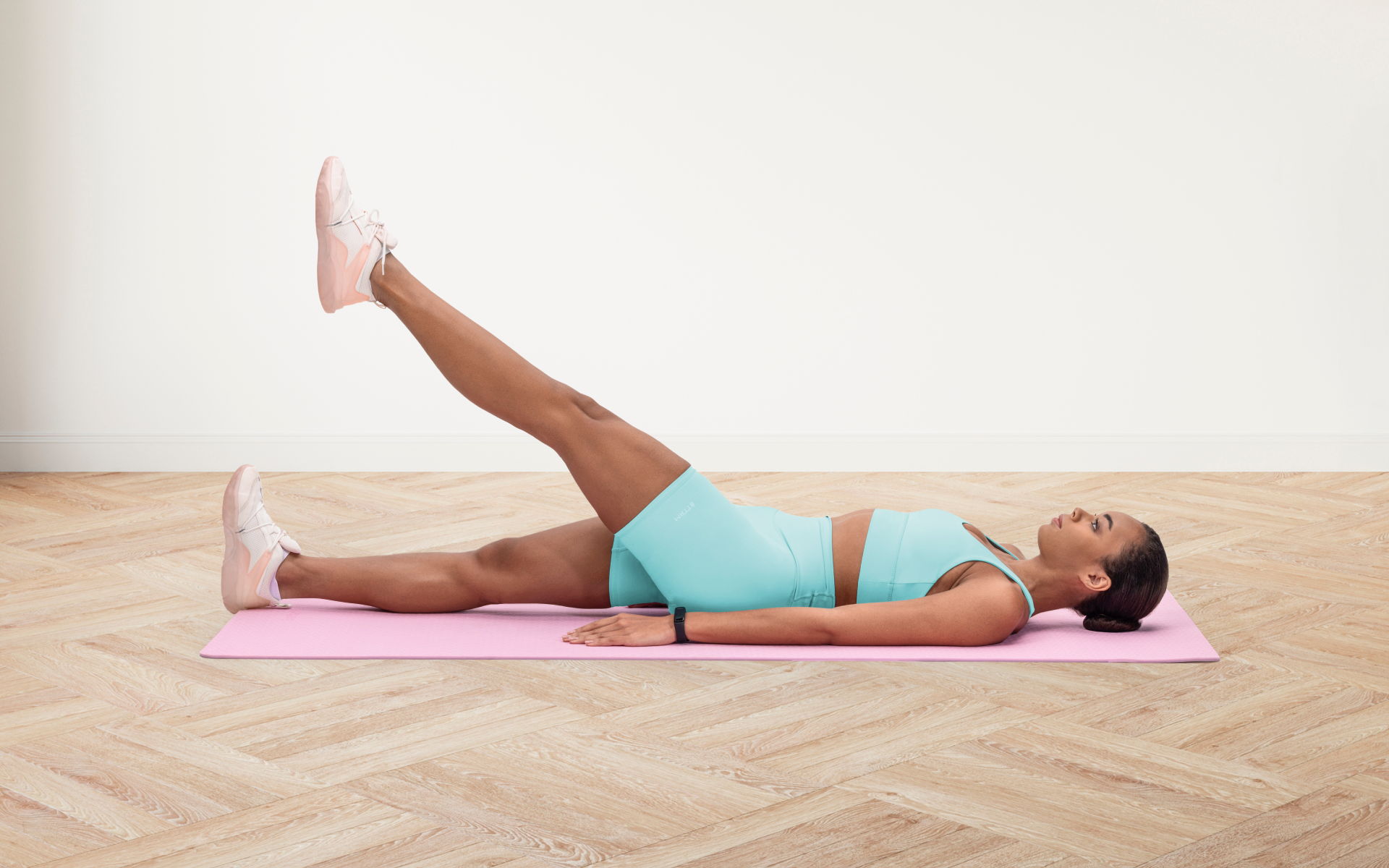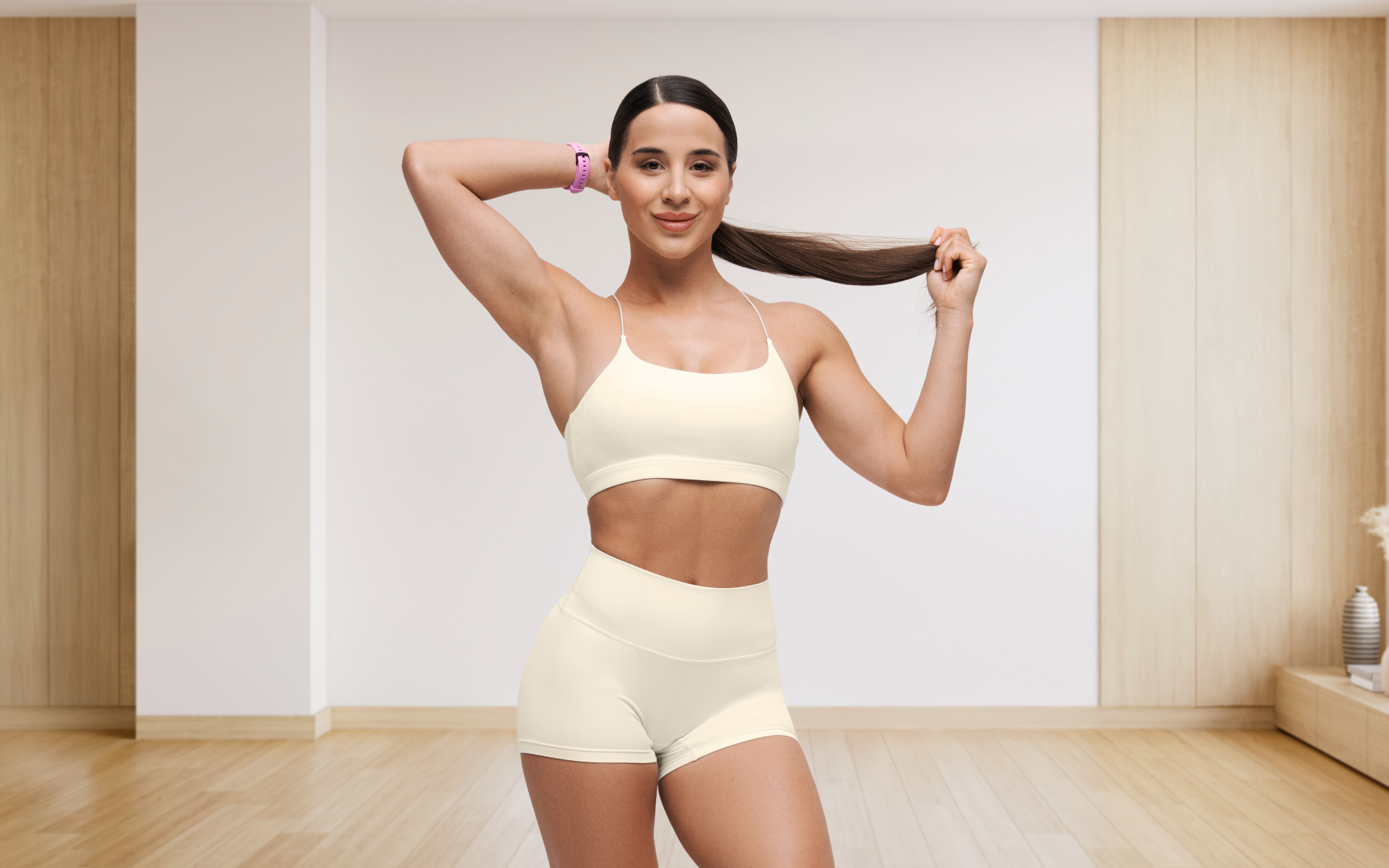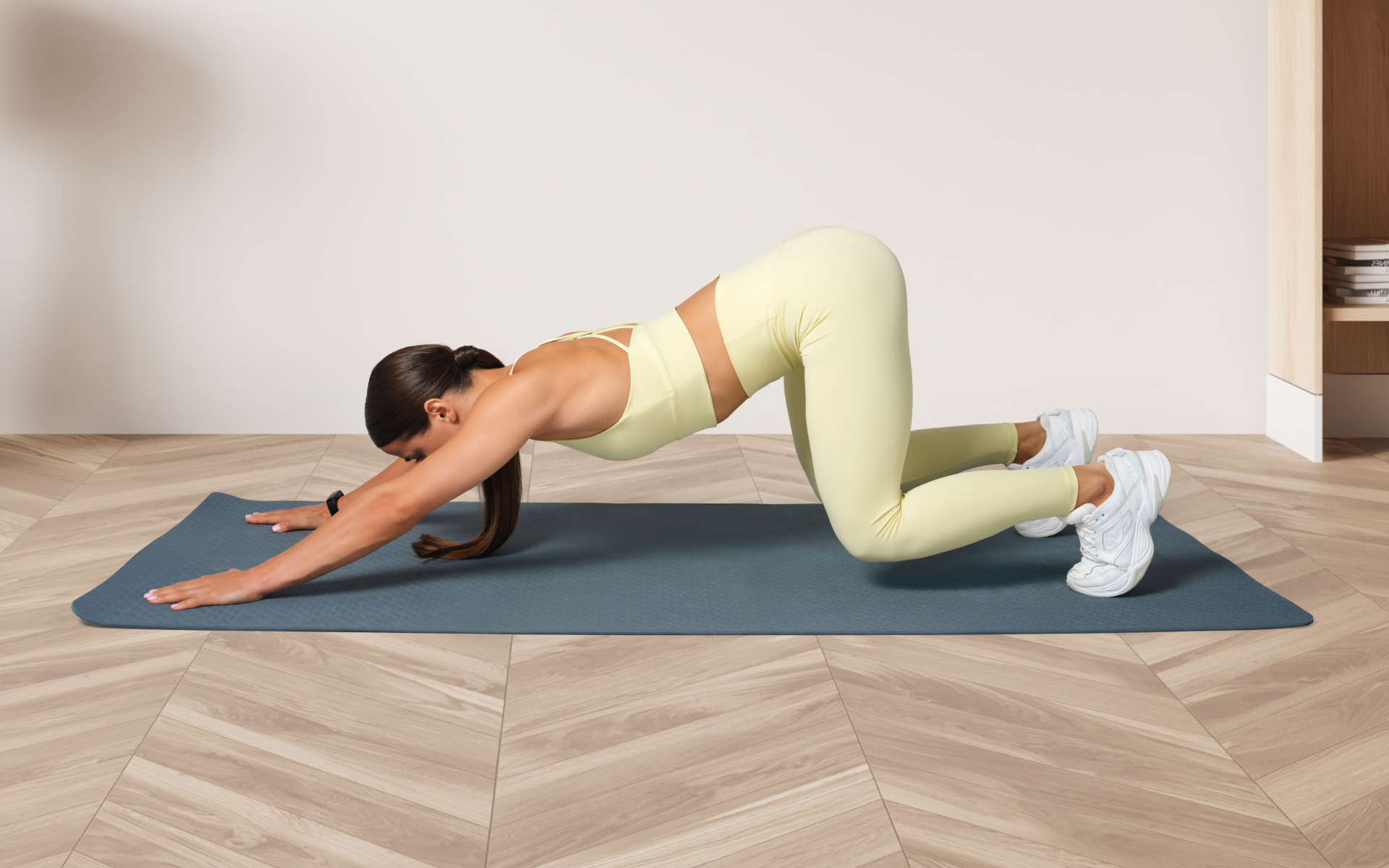Pilates is focused on core stability, flexibility, and controlled movement patterns (1), while gym workouts focus on weight lifting typically emphasize strength, power, and muscle building (2). When they are combined strategically, they complement each other beautifully.
However, you must understand how to structure your training to maximize the benefits while avoiding overtraining.
This comprehensive guide will explore how to effectively combine Pilates with gym workouts, including specific workout plans, equipment recommendations, and practical tips for beginners.
You’ll discover how this combination can improve your performance, reduce injury risk, and create a more balanced approach to fitness.
Is Pilates Just as Good as the Gym?
Pilates and gym workouts focused on weight lifting serve different purposes, which makes them complementary rather than competitive. From a neuroscience perspective, both forms of exercise activate different neural pathways and create unique adaptations in your body and brain.
Traditional gym workouts excel at building raw strength, muscle mass, and cardiovascular endurance. They typically involve heavier loads and explosive movements that challenge your anaerobic energy systems (3). This type of training is believed to stimulate muscle protein synthesis effectively and improve your ability to generate maximum force (4).
On the other hand, Pilates focuses on movement quality, core stability, and neuromuscular control (1, 5). It enhances your proprioception – your body’s ability to sense its position in space – which is essential for injury prevention and movement efficiency (6, 7). The controlled, flowing movements in Pilates can help activate your parasympathetic nervous system, which promotes recovery and reduces stress (8, 9).
In this study, Pilates resulted in the following in healthy adults aged 20-29: (5):
- Deep core muscle activation by up to over 40%
- Spinal mobility and stability
- Balance and proprioception
- Movement coordination and control
However, Pilates alone may not provide sufficient stimulus for significant muscle growth or cardiovascular improvements compared to traditional gym training. This is why combining both approaches creates the most comprehensive fitness program.
The neurological benefits of this combination are particularly interesting. Pilates helps develop better movement patterns and body awareness (10), which translates to improved performance in your gym workouts. At the same time, gym training with weightlifting involved builds the raw strength and power (2) that can enhance your Pilates practice. If you’re curious about Pilates workout routine, check out our earlier article.
Read more: Pilates Weekly Workout Plan for Beginners
Are There Any Pilates Gyms?
The fitness industry has evolved to meet the demand for integrated training approaches. Today, you’ll find several types of facilities that combine Pilates with traditional gym equipment:
Hybrid Fitness Studios offer both Pilates classes and gym equipment in the same facility. These studios typically feature reformer machines, cadillac apparatus, and traditional weight training equipment. This setup allows you to seamlessly transition between different training modalities.
Boutique Pilates Studios increasingly incorporate functional fitness equipment like TRX suspension trainers, kettlebells, and resistance bands into their classes. This trend reflects the growing understanding that combining movement disciplines creates better results.
Traditional Gyms with Pilates Programs now commonly offer Pilates classes alongside their standard equipment. Many have dedicated Pilates rooms with specialized apparatus while maintaining their weight rooms and cardio areas.
Corporate Wellness Centers often feature this integrated approach, recognizing that employees benefit from both strength training and stress-reducing movement practices such as Pilates.
At such facilities, you can work with trainers who understand both disciplines and can create cohesive programs that maximize the benefits of each approach.
For more details about Pilates workout app, take a look at our prior publication.
Can You Do Pilates in Any Gym?
Most traditional gyms can accommodate Pilates workouts, although the experience varies depending on available equipment and space. Here’s what you need to know about practicing Pilates in different gym environments:
Equipment-Based Pilates requires specialized apparatus like reformers, cadillac machines, or stability chairs. These are typically found only in dedicated Pilates studios or hybrid facilities. However, many gyms now offer at least basic Pilates equipment.
Mat-Based Pilates can be performed in virtually any gym setting. You only need floor space and a mat, making it highly accessible. Most gyms have group fitness rooms or stretching areas that work perfectly for mat Pilates.
Modified Pilates Gym Workouts use standard gym equipment to achieve similar movement patterns and muscle activation as traditional Pilates. This approach makes Pilates principles accessible regardless of specialized equipment availability.
Reasons why BetterMe is a safe bet: a wide range of calorie-blasting workouts, finger-licking recipes, 24/7 support, challenges that’ll keep you on your best game, and that just scratches the surface! Start using our app and watch the magic happen.
Essential gym equipment that supports Pilates-style training includes:
- Exercise mats for floor work
- Stability balls for core activation
- Resistance bands for controlled resistance
- Cable machines for variable resistance angles
- Suspension trainers for bodyweight resistance
The benefits of Pilates – improved body awareness, core stability, and movement control (1) – can be achieved using standard gym equipment when you understand the underlying principles.
Which Pilates Moves Can Boost Your Gym Workouts?
Integrating Pilates exercises into your gym sessions can do more than just strengthen your core – they can elevate your overall performance, help prevent injuries, and create a foundation for efficient movement. Are you wondering which moves will make the biggest impact? Let’s break them down and go through the steps to include them in your routine.
The Hundred
The hundred is a fundamental Pilates exercise that is designed to improve core endurance and breathing coordination. Starting your workout with this move will help activate your deep abdominals and set up effective breathing patterns for the rest of your session.
How to do it:
- Lie on your back with your knees bent and your feet flat on the mat.
- Bring your legs into tabletop position so your knees are directly above your hips and your shins are parallel to the floor.
- Lift your head, neck, and shoulders off the mat, reaching your arms long by your sides.
- Inhale deeply, then start to pump your arms up and down vigorously as you inhale for five counts and exhale for five counts.
- Aim to complete 10 full breaths, reaching a total of 100 arm pumps, while maintaining stable abs and controlled breathing throughout.
Dead Bug Variations
Dead bug variations are excellent for building core stability and developing coordination. You’ll learn to keep your spine neutral as you move your arms and legs, which is directly transferable to compound lifts like squats and deadlifts.
How to do it:
- Lie on your back with your arms extended toward the ceiling and your knees bent at 90 degrees.
- Engage your core to press your lower back gently into the mat.
- Slowly lower your right arm and your left leg toward the floor, keeping your back flat and your core tight.
- Return to the starting position, then repeat with the opposite arm and leg.
- Complete 8-12 repetitions per side, focusing on control and stability.
Bird Dog Progressions
Bird dog progressions help improve posterior chain activation and shoulder stability. They are perfect for prepping your body for pulling movements and improving posture.
How to do it:
- Start in a tabletop position with your hands under your shoulders and your knees under your hips.
- Engage your core and extend your right arm forward and your left leg back, keeping both parallel to the floor.
- Pause and check that your hips and shoulders remain level.
- Slowly return to the starting position and switch sides.
- For an added challenge, try drawing small circles with your extended limbs or holding the position for a few extra seconds. Aim for 8-10 reps per side.
Glute Bridges with Pilates Modifications
Pilates-style glute bridges activate your glutes more intensely than standard versions. Adding leg extensions or performing the movement one leg at a time builds core and hip strength and stability.
How to do it:
- Lie on your back with your knees bent and your feet flat on the ground, hip-width apart.
- Press through your heels and lift your hips off the mat, forming a straight line from your shoulders to your knees.
- Engage your glutes and core – avoid overarching your back.
- For a Pilates variation, extend one leg out or lift one foot slightly off the mat as you bridge.
- Lower slowly and repeat for 10-15 reps on each side.
Pilates Push-Up Sequences
Pilates push-up sequences focus on precision, controlled movement, and full-body integration. They teach improved scapular activation and core stability, which can benefit lifts such as the bench press or overhead press.
How to do it:
- Stand tall, then roll down through your spine to place your hands on the mat.
- Walk your hands out into a plank, ensuring your body forms a straight line from your head to your heels.
- Engage your core and bend your elbows to lower your chest with control, then press back up.
- Walk your hands back toward your feet and roll up to standing.
- Perform 5-8 repetitions, maintaining form and mindful breathing throughout.
Single-Leg Deadlift Patterns
Drawing from Pilates, single-leg deadlifts challenge your balance, proprioception, and unilateral strength. These patterns are valuable for fixing muscle imbalances and increasing stability for both gym and daily activities.
How to do it:
- Stand with your feet hip-width apart and shift your weight onto your right foot.
- Keeping your right knee soft, hinge at your hip while extending your left leg straight behind you for balance.
- Reach your arms forward or toward the floor as your torso lowers, maintaining a straight line from your head to your heels.
- Return to standing with control, using your glutes and core to stabilize.
- Repeat for 8-10 reps per side, focusing on balance and a slow, steady pace.
Remember, the effectiveness of these exercises comes from practicing them with control, steady breathing, and a strong mind-muscle connection. Try adding one or two of these moves to your next session and notice how your main lifts feel more stable and coordinated.
What Is a Pilates Gym Workout Plan?
A well-designed Pilates gym workout plan integrates both movement disciplines strategically throughout your training week. Here’s a comprehensive approach to get you started:
Monday – Upper-Body Strength and Pilates Core
Start with 15 minutes of Pilates mat work focusing on core activation and shoulder stability. Follow this with traditional upper-body strength training using the pre-activated stabilizing muscles. End with 10 minutes of Pilates stretching and mobility work.
Tuesday – Lower-Body Power and Pilates Stability
Start with dynamic Pilates movements that activate your glutes and deep core muscles. Proceed to explosive lower-body exercises such as squats, deadlifts, and plyometrics. Conclude with Pilates-based hip flexor stretches and spinal mobility work.
Wednesday – Full-Body Pilates and Light Cardio
Dedicate this session to equipment-based Pilates or an extended mat routine. Include 20-30 minutes of low-intensity cardio such as walking or cycling. This serves as active recovery while maintaining movement quality.
Thursday – Push/Pull Strength and Pilates Integration
Alternate between pushing and pulling exercises with Pilates-based core challenges between sets. This approach maintains core engagement while allowing upper body muscles to recover between exercises.
Friday – Full-Body Pilates Gym Workout
Combine traditional gym exercises with Pilates principles throughout the entire session. Use controlled tempos, emphasize form over weight, and include balance challenges with standard exercises. Dive deeper into the full-body pilates workout with our dedicated article.
Weekend – Active Recovery
Choose gentle Pilates flows, walking, or recreational activities that maintain movement without intense training stress.
This structure ensures you’re getting strength-building stimulus from gym workouts while developing the movement quality and stability that Pilates provides. The combination creates a more resilient, well-rounded fitness foundation.
Read more: Does Pilates Burn Fat? The Factual Truth About This Trending Workout
How Many Times a Week Should I Do Pilates?
The optimal frequency for Pilates depends on your fitness goals, training experience, and overall program structure. Practical experience suggests specific guidelines for different scenarios.
For Beginners combining Pilates with gym workouts, start with 2-3 Pilates sessions per week. This frequency allows your nervous system to adapt to the new movement patterns while building foundational strength and stability. Your body needs time to develop the neuromuscular control that makes Pilates effective.
Intermediate practitioners can benefit from 3-4 Pilates sessions weekly, particularly when using it to support gym training. This frequency provides enough stimulus for continued improvement while allowing adequate recovery between sessions.
Advanced athletes may incorporate Pilates principles into their training 4-5 times per week, often as warm-up, cool-down, or recovery sessions alongside their primary training. At this level, Pilates becomes more integrated into the overall training philosophy rather than a separate activity.
When it comes to weight loss, progress is made by inches, not miles, so it’s much harder to track and a lot easier to give up. The BetterMe: Health Coaching app is your personal trainer, nutritionist, and support system all in one. Start using our app to stay on track and hold yourself accountable!
For injury prevention and rehabilitation, daily Pilates movement is often beneficial. Short 10-15 minute sessions focusing on mobility, core activation, and movement quality can significantly impact your overall training quality and injury risk.
The key is to listen to your body and adjust the frequency based on your response. Signs you may be overdoing it include increased muscle tension, decreased performance in gym workouts, pain/injury, or persistent fatigue.
More frequent, shorter sessions (basically, working with your schedule and accommodating life’s uncertainties) often produce better results than less frequent, longer sessions. This approach allows for better motor learning and skill acquisition while preventing excessive fatigue.
Consider your weekly training volume holistically. If you’re doing intense gym workouts 4-5 times per week, your Pilates sessions should be more recovery-focused. If your gym training is lighter, you can handle more challenging Pilates workouts.
Pilates is primarily a strength-based workout that is focused on core stability, muscular endurance, and control (1). However, depending on the pace and intensity, it can also provide some cardiovascular benefits, particularly in dynamic flow routines (11). The slower, controlled movements typically prioritize strength and stability over cardio. Most people notice improvements in flexibility, posture, and core strength within 4-6 weeks of consistent practice, assuming 2-3 sessions per week. Enhanced body awareness and better balance can often be felt even sooner, particularly for beginners who integrate Pilates into their routines. The best time for Pilates will depend on your schedule and energy levels. Morning sessions can boost energy, mobility, and focus for the day ahead, while evening sessions relax tight muscles and help you destress after a long day. Choose the time that is best aligned with your body’s natural rhythm. Pilates can promote a stronger core by targeting deep abdominal muscles (5). While it helps tone the midsection, it’s important to combine it with a balanced diet and overall physical activity for noticeable fat loss (12). Pilates alone doesn’t directly “slim” the belly, but it contributes to a leaner appearance by improving posture and core strength.Frequently Asked Questions
Is Pilates cardio or strength?
How long does it take to see Pilates results?
Should I do Pilates in the morning or at night?
Does Pilates slim your belly?
The Bottom Line
Combining Pilates with gym workouts is optimal for creating a well-rounded fitness program. This integration addresses the limitations of each approach while amplifying their benefits.
Pilates provides the foundation of stability, mobility, and body awareness that makes your gym workouts safer and more effective. At the same time, gym training provides the strength and power stimulus that enhances your Pilates practice.
Start by incorporating 2-3 Pilates sessions into your weekly routine, focusing on the fundamental movements that support your gym training. Pay attention to how your body responds and adjust accordingly. Remember, the goal is sustainable progress rather than perfection.
DISCLAIMER:
This article is intended for general informational purposes only and does not serve to address individual circumstances. It is not a substitute for professional advice or help and should not be relied on for making any kind of decision-making. Any action taken as a direct or indirect result of the information in this article is entirely at your own risk and is your sole responsibility.
BetterMe, its content staff, and its medical advisors accept no responsibility for inaccuracies, errors, misstatements, inconsistencies, or omissions and specifically disclaim any liability, loss or risk, personal, professional or otherwise, which may be incurred as a consequence, directly or indirectly, of the use and/or application of any content.
You should always seek the advice of your physician or other qualified health provider with any questions you may have regarding a medical condition or your specific situation. Never disregard professional medical advice or delay seeking it because of BetterMe content. If you suspect or think you may have a medical emergency, call your doctor.
SOURCES:
- Pilates: how does it work and who needs it? (2011, pmc.ncbi.nlm.nih.gov)
- No Time to Lift? Designing Time-Efficient Training Programs for Strength and Hypertrophy: A Narrative Review (2021, pmc.ncbi.nlm.nih.gov)
- Anaerobic Exercise (n.d., physio-pedia.com)
- Adaptations to Endurance and Strength Training (2018, pmc.ncbi.nlm.nih.gov)
- Effects of Core Stability Training on Deep Stabilizing Muscle Function and Neuromuscular Control (2025, pmc.ncbi.nlm.nih.gov)
- An online pilates exercise program is effective on proprioception and core muscle endurance in a randomized controlled trial (2021, pmc.ncbi.nlm.nih.gov)
- Effects of proprioceptive training on sports performance: a systematic review (2024, biomedcentral.com)
- Effects of Exercise Training on the Autonomic Nervous System with a Focus on Anti-Inflammatory and Antioxidants Effects (2025, pmc.ncbi.nlm.nih.gov)
- Benefits of Pilates on Depression, Anxiety, and Stress: An Observational Study Comparing People Practicing Pilates to Non-Active Controls (2025, pmc.ncbi.nlm.nih.gov)
- The effect of pilates on body awareness, activity level, aerobic capacity, and balance in healthy young adults (2021, researchgate.net)
- Effects of Pilates Training on Cardiorespiratory Functions in Medical Conditions – Comprehensive Approach: A Narrative Review (2024, pmc.ncbi.nlm.nih.gov)
- The Effects of Online Home-Based Pilates Combined with Diet on Body Composition in Women Affected by Obesity: A Preliminary Study (2024, pmc.ncbi.nlm.nih.gov)
